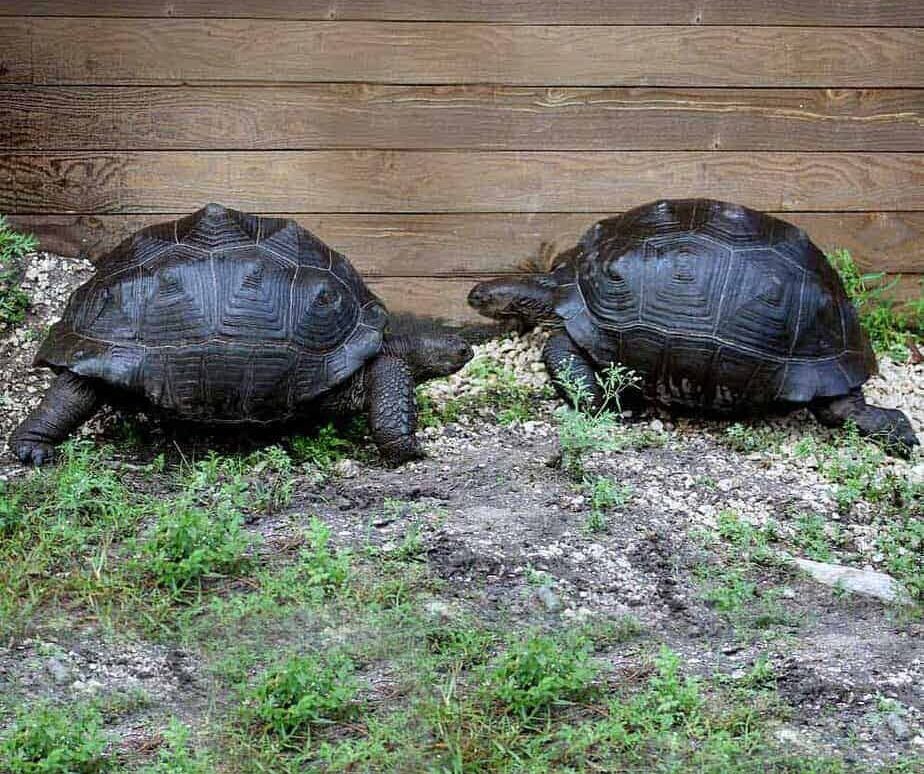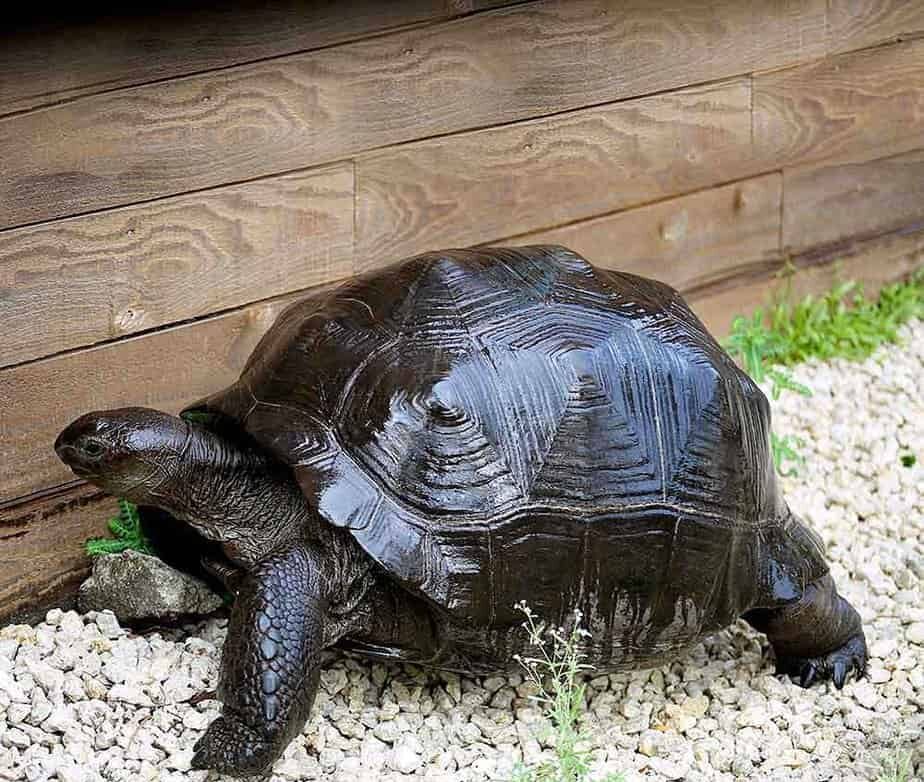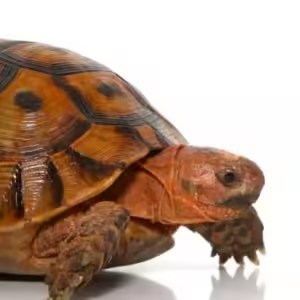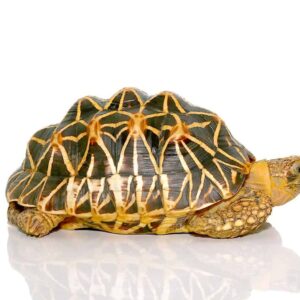Aldabra Tortoise For Sale
$24,999.99
WE HAVE ALDABRA TORTOISE FOR SALE. HERE ARE SOME HIGHLIGHTS:
- Geochelone gigantea
- Captive Bred Male And Female Pair
- Approximately 26 And 28 Inches In Shell Length, 100lbs And 120lbs
- Adults Can Reach Up To 48 Inches In Shell Length And 550 Pounds
- Feasting On Fresh Greens, Mixed Vegetables, Hays, And Mazuri Tortoise Diet
FUN FACTS!
- Originating Just North Of Madagascar From The Island Of Aldabra Atoll In The Seychelles
- This Is The Second Largest Species Of Tortoise In The World
- These Are Great Personable Tortoises That Really Become Part Of The Family
- With Proper Care And A Well Maintained Diet These Can Live Up To 80 – 120 Years Old
- These Tortoises Inhabit A Wide Range From Mangrove Swamps To Coastal Dunes
- Zoo Quality Animals That Will Be A Magnificent Breeding Project
Description
The Aldabra tortoise, scientifically known as Aldabrachelys gigantea, stands as one of the largest tortoises globally, renowned for its impressive size and longevity. This majestic species traces its origins to the Aldabra Atoll in the Seychelles, an isolated group of coral islands in the Indian Ocean. The Aldabra tortoise thrives in this unique ecosystem, which has remained relatively undisturbed, allowing these ancient reptiles to flourish.
Historically, the Aldabra tortoise has been a subject of intrigue since its discovery by early explorers. Its immense size, with some individuals weighing over 500 pounds and measuring up to 4 feet in length, has captivated naturalists and researchers alike. The species falls under the Testudinidae family, which encompasses other giant tortoises, yet the Aldabra tortoise stands out due to its sheer size and distinctive characteristics.
The Aldabra tortoise plays a crucial role in its native habitat, significantly impacting the ecosystem of the Aldabra Atoll. These herbivorous giants are primary grazers, feeding on grasses, leaves, and woody plant material. Their feeding habits help shape the vegetation landscape, promoting the growth of certain plant species while controlling the spread of others. This ecological balance is vital for maintaining the health of the atoll’s flora and fauna.
Conservationists and scientists are particularly interested in the Aldabra tortoise due to its status as an emblematic species of conservation. The Aldabra Atoll, a UNESCO World Heritage Site, serves as a natural refuge for these tortoises, protecting them from the threats faced by many other tortoise species. However, ongoing conservation efforts are essential to safeguard their future, addressing challenges such as habitat degradation, climate change, and human impact.
Overall, the Aldabra tortoise is not only a marvel of nature but also a keystone species that highlights the importance of preserving our planet’s biodiversity. Its enduring presence on the Aldabra Atoll offers invaluable insights into the resilience of life in isolated ecosystems and underscores the significance of concerted conservation efforts.
Physical Characteristics
The Aldabra tortoise, scientifically known as Aldabrachelys gigantea, is one of the largest tortoise species in the world, rivaled only by the Galápagos tortoise. A fully grown Aldabra tortoise can reach an impressive size, with males typically measuring up to 48 inches in length and weighing as much as 550 pounds. Females are generally smaller, averaging around 36 inches in length and weighing approximately 350 pounds. This significant size difference between the sexes is one of the distinguishing characteristics of this species.
The shell of an Aldabra tortoise is another notable feature, comprising a high-domed, dark brown or black carapace that provides excellent protection against predators. The scutes, or individual plates, that make up the shell are often marked with growth rings, which can provide an indication of the tortoise’s age. The plastron, or the bottom part of the shell, is lighter in color and offers additional protection to the tortoise’s underbelly. The robust and sturdy shell structure is essential for the Aldabra tortoise’s survival in its natural habitat.
Coloration is relatively uniform across the species, with most Aldabra tortoises exhibiting a dark, almost black, coloration. However, the skin of these tortoises is typically grayish to black, with a more leathery texture. This coloration helps them blend into their natural surroundings, providing camouflage from potential threats. The limbs are strong and thick, supporting the tortoise’s substantial body weight and aiding in its slow but steady movement across the terrain.
Additionally, the Aldabra tortoise has a few unique features that set it apart from other tortoise species. Notably, they possess a distinctive, elongated neck, which allows them to reach vegetation that is otherwise inaccessible. This adaptation is particularly beneficial in their native habitats, where food sources can be sparse. Male Aldabra tortoises also have concave plastrons, which facilitate mating by allowing them to mount the females more effectively.
Overall, the Aldabra tortoise’s physical characteristics, including its impressive size, sturdy shell, and unique adaptations, contribute to its status as one of the most remarkable and resilient tortoise species in the world.
Habitat and Distribution
The Aldabra tortoise primarily inhabits the Aldabra Atoll, located in the Seychelles archipelago in the Indian Ocean. This remote and relatively undisturbed atoll offers a unique environment that supports the life and growth of these magnificent creatures. The climate in Aldabra Atoll is typically tropical, characterized by a warm and humid atmosphere with a distinct wet and dry season. Temperatures generally range between 24 to 30 degrees Celsius, providing an ideal thermal environment for the Aldabra tortoise.
The vegetation of the Aldabra Atoll is diverse, featuring a mix of grasslands, mangrove swamps, and coastal dunes. The tortoises predominantly graze on grasses and herbs, but they are also known to feed on fallen leaves, fruits, and even small invertebrates. The varied plant life supports their nutritional needs and contributes to their overall health and longevity. Additionally, the terrain of the atoll, marked by limestone formations and coral reefs, creates a unique and protective habitat for these tortoises.
Historically, the distribution of the Aldabra tortoise was restricted to the Aldabra Atoll and a few other islands in the Indian Ocean. However, due to conservation efforts and the introduction of these tortoises to other locations, their distribution has slightly expanded. Today, populations of Aldabra tortoises have been successfully established in several nature reserves and botanical gardens worldwide, which helps to ensure the survival of the species.
Despite these efforts, the Aldabra Atoll remains the primary stronghold for the species, supporting the largest population of Aldabra tortoises. This continued concentration highlights the critical importance of preserving their native habitat. Conservation measures are essential to maintain the delicate balance of this unique ecosystem, ensuring that the Aldabra tortoise can thrive in its natural environment for generations to come.
Diet and Feeding Behavior
The Aldabra tortoise, a majestic and ancient creature, exhibits distinct dietary habits that are integral to its survival and ecological role. In their natural habitat, these tortoises are primarily herbivores, with their diet predominantly consisting of a variety of vegetation. They forage for grasses, leaves, woody plant stems, and fruits, demonstrating a preference for low-lying vegetation that is easily accessible. The Aldabra tortoise is particularly fond of succulent plants, which provide both nutritional value and necessary hydration.
The feeding behavior of the Aldabra tortoise is a fascinating aspect of its daily life. These tortoises are generally solitary foragers, but it is not uncommon to observe them feeding in close proximity during peak feeding times. Social interactions during feeding are minimal, as each tortoise focuses on its own foraging activities. However, during the breeding season or in areas with abundant food resources, these interactions can become more pronounced. The tortoises use their strong, beak-like mouths to tear and chew their food, displaying a methodical and deliberate eating process.
Seasonal variations significantly influence the diet of the Aldabra tortoise. During the wet season, when vegetation is lush and abundant, they have access to a wider variety of plants and fruits. Conversely, in the dry season, their diet becomes more restricted, and they rely heavily on drought-resistant plants and any available moisture-rich foods. This adaptation to seasonal changes ensures their survival in fluctuating environmental conditions.
As herbivores, Aldabra tortoises play a crucial role in their ecosystem. By consuming a large amount of plant material, they help maintain the balance of vegetation and contribute to seed dispersal. Their grazing habits can also influence the structure of plant communities, promoting biodiversity. The Aldabra tortoise, through its dietary habits and feeding behavior, exemplifies the intricate connections within its ecosystem, highlighting its importance as a keystone species.
Reproduction and Life Cycle
The Aldabra tortoise exhibits fascinating reproductive behaviors that contribute significantly to the species’ survival. Mating rituals among Aldabra tortoises often involve complex interactions, with males engaging in competitive behaviors to gain the attention of females. These rituals can include head bobbing, vocalizations, and physical displays of dominance. Once a female has selected a mate, copulation ensues, which can last for several hours.
Nesting occurs primarily during the dry season when female Aldabra tortoises seek out soft, sandy soil to lay their eggs. A single clutch can contain anywhere from 9 to 25 eggs, which are carefully buried in a nest to protect them from predators and environmental stresses. The incubation period for Aldabra tortoise eggs is remarkably long, typically ranging from 110 to 250 days, depending on ambient temperature and humidity levels.
Hatching is a critical stage in the life cycle of the Aldabra tortoise. The hatchlings, which measure approximately 6 to 8 centimeters in length, must break free from their eggshells using a specialized egg tooth. This process can take several days and demands significant energy reserves. Once emerged, the young tortoises face numerous challenges, including predation and environmental exposure. Despite these challenges, they are remarkably resilient, with many reaching maturity after several decades.
The longevity of Aldabra tortoises is one of their most notable characteristics. These majestic reptiles can live for over a century, with some individuals documented to have lived for more than 150 years. Factors influencing their lifespan include genetic predispositions, environmental conditions, and human impact. Proper conservation efforts and habitat protection are crucial to ensuring the continued survival and longevity of these remarkable creatures.
Conservation Status and Threats
The Aldabra tortoise (Aldabrachelys gigantea) is listed as “Vulnerable” on the IUCN Red List of Threatened Species. This classification underscores the pressing need for conservation measures to ensure the survival of these remarkable creatures. The primary threats to the Aldabra tortoise include habitat loss, climate change, and human activities, all of which have had significant impacts on their populations.
Habitat loss is a critical issue, primarily due to human encroachment and land development. The Aldabra Atoll, the natural habitat of these tortoises, has been subject to increased human activity, including tourism and infrastructure development. This encroachment reduces the available habitat and disrupts the delicate ecosystem balance necessary for the tortoises’ survival. Additionally, invasive species introduced by human activity pose a threat by competing for resources or preying on tortoise eggs and hatchlings.
Climate change further exacerbates the challenges faced by the Aldabra tortoise. Rising sea levels and increased frequency of extreme weather events threaten to inundate the low-lying atolls. This not only diminishes the available land but also affects the vegetation that the tortoises rely on for food. Changes in temperature and precipitation patterns can also disrupt breeding cycles and negatively impact hatchling survival rates.
Conservation efforts are crucial in mitigating these threats. Protective measures include the establishment of nature reserves and protected areas to safeguard critical habitats. Breeding programs have been implemented to increase population numbers and ensure genetic diversity. For instance, the Seychelles Islands Foundation (SIF) has been actively involved in monitoring and managing tortoise populations on the Aldabra Atoll.
Individuals can contribute to the conservation of the Aldabra tortoise by supporting organizations dedicated to their preservation. Reducing one’s carbon footprint, advocating for sustainable tourism practices, and spreading awareness about the plight of these tortoises are practical steps that can make a significant difference. Through concerted efforts at both the organizational and individual levels, we can help secure a future for the majestic Aldabra tortoise.
Aldabra Tortoises in Captivity
Aldabra tortoises, recognized for their impressive size and longevity, are a prominent feature in numerous zoos and wildlife sanctuaries globally. These institutions strive to replicate the tortoises’ natural habitat to ensure their well-being and promote educational awareness. Maintaining Aldabra tortoises in captivity necessitates a comprehensive understanding of their care requirements, including diet, habitat, and health care.
In captivity, Aldabra tortoises thrive on a diet that closely mimics their natural foraging habits. Their diet primarily consists of a variety of leafy greens, grasses, and vegetables, supplemented with occasional fruits. Ensuring a balanced diet is crucial to prevent nutritional deficiencies and promote healthy growth. Additionally, providing a calcium supplement is essential to support their robust skeletal structure.
The habitat for Aldabra tortoises in captivity must be meticulously designed to accommodate their size and activity levels. Enclosures should be spacious, with ample room for roaming, grazing, and basking. Substrate choices, such as sandy soil and grassy areas, help mimic their native environment. Access to fresh water for drinking and soaking is vital, and temperature regulation through shaded areas and basking spots ensures their comfort and health.
Regular veterinary care is indispensable for Aldabra tortoises in captivity. Routine health checks, parasite control, and monitoring of shell and skin conditions are fundamental aspects of their care. Zoos and sanctuaries often collaborate with herpetologists and veterinary experts to address any health concerns promptly and effectively.
The ethical considerations of keeping Aldabra tortoises in captivity are multifaceted. While these institutions play a critical role in conservation efforts and educational outreach, it is imperative to ensure that the tortoises’ welfare is paramount. Captive breeding programs and habitat preservation projects are essential components of these efforts. Moreover, educating the public about the ecological significance and conservation needs of Aldabra tortoises fosters a greater appreciation and commitment to protecting these majestic creatures in the wild.
Interesting Facts and Myths
The Aldabra tortoise, scientifically known as Aldabrachelys gigantea, is a remarkable species that has long captivated the interest of both scientists and nature enthusiasts. One of the most astonishing facts about the Aldabra tortoise is its extraordinary ability to survive without food or water for extended periods. This endurance is attributed to their slow metabolism and efficient storage of fat and water in their bodies, enabling them to thrive in the harsh conditions of their native habitat on the Aldabra Atoll in the Indian Ocean.
Another intriguing aspect of the Aldabra tortoise is its impressive longevity. These tortoises can live well over 100 years, making them one of the longest-living vertebrates on the planet. Their slow pace of life, combined with a diet consisting mainly of grasses, leaves, and woody plant stems, contributes to their extended lifespan. Additionally, Aldabra tortoises are known for their significant size, with males often reaching weights of up to 550 pounds and lengths of up to four feet.
Despite their fascinating traits, several myths and misconceptions about Aldabra tortoises persist. One common myth is that these tortoises are aggressive and dangerous to humans. In reality, Aldabra tortoises are generally docile and have a calm demeanor. They are herbivores and pose no threat to humans, often displaying curiosity rather than aggression when encountering people.
Another widespread misconception is that Aldabra tortoises are capable of swimming long distances. While they are buoyant and can float, they are not adapted for swimming and can only travel short distances in water. This myth likely stems from their ability to survive in island environments, but it is important to note that their primary means of movement is on land.
Understanding these facts and debunking myths about the Aldabra tortoise not only enriches our knowledge but also fosters a greater appreciation for these majestic creatures. Their unique adaptations and impressive survival skills highlight the importance of conservation efforts to protect their natural habitats and ensure their continued existence.








